Can you remember the last time you wrote a letter? How about receiving one? If you can’t answer, we don’t blame you. These days, learning how to write a letter might seem pointless—
but it’s a valuable skill everyone should know!
View in gallery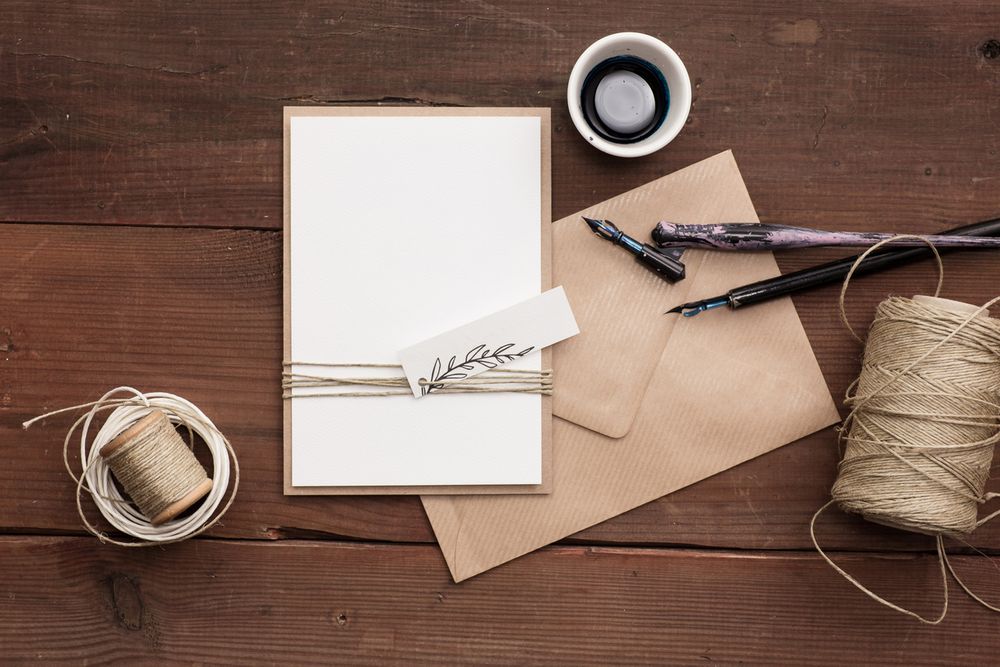
Like any skill, letter writing takes practice. Fortunately for you, you have this guide to teach how to write a letter, including formal and informal letters!
The Lost Art of Letter Writing
Knowing how to write a letter is like knowing how to tie a bow tie: It’s a novelty skill. Why learn when you can buy a clip-on bow tie or, in this case, send an email?
Well, the novelty factor is precisely why you should write letters.
View in gallery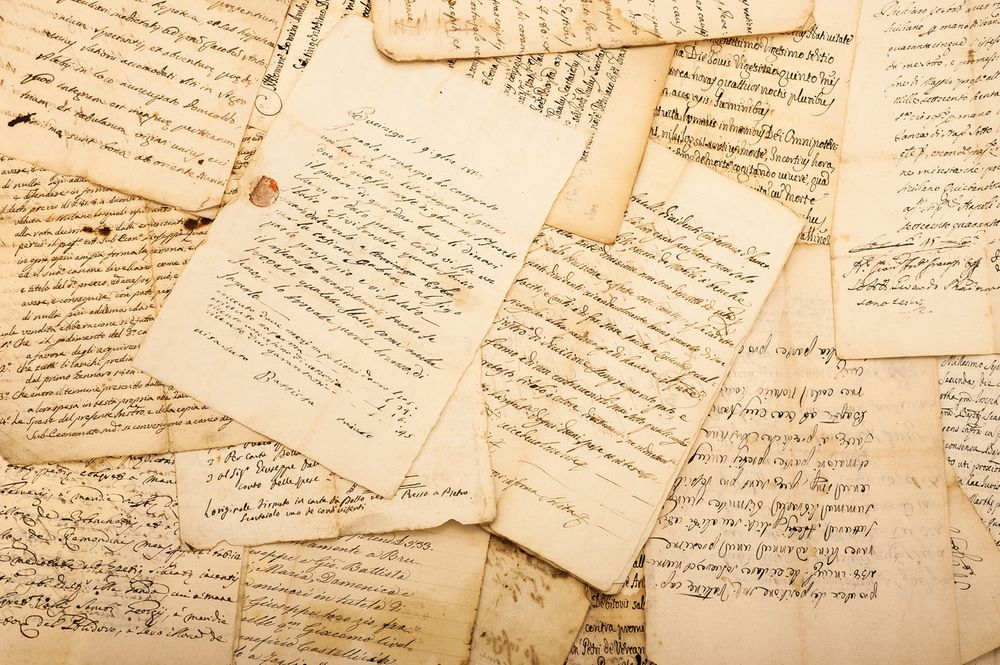
According to a Gallup poll, 94% of Americans love receiving letters or cards from someone they know. So, yes, senders can easily text. Yet, by going the extra mile with a physical letter, they’re doing something special for the recipient.
Letters, particularly personal letters, stand out in the world of digital communications.
Furthermore, formal letter writing is an essential (albeit underappreciated) business skill.
Be it a cover letter or a resignation; a good letter can change the course of your career. It’s also a standard form of communication for most businesses.
Learning how to write a letter is more important than you’d think.
Below, we’ll explore the essential elements of letter writing, including how to write a formal or informal letter. We’ll also discuss when and why you should write a letter, plus other great tips!
Letter Writing Basics
As you learn how to write a letter correctly, you’ll find that it requires some planning and precision.
First, you must choose your medium. For example, you might draft by hand using a pen or pencil. You can also write your letter on a word processor such as Microsoft Word, then print it out.
View in gallery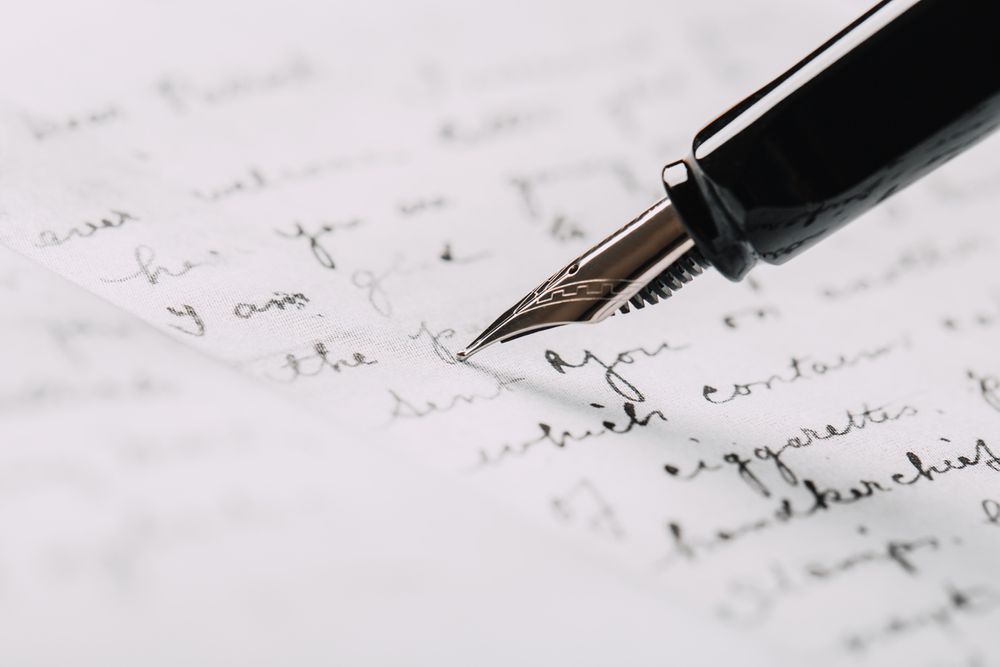
Next, you will have to decide on a formal or informal letter.
Both types of letter writing have different rules (which we’ll explore in-depth later.) Generally, however, letters follow this basic structure:
- Sender’s address: This section will contain your return address. All formal letters and some informal letters will begin with this section. It should include your full name, street address, and your city, state, and zip code.
- Date: Most letters include a dateline. Write the date in full, including month, day, and year (or day, month, and year for non-American writing styles.)
- Recipient’s address: All formal letters include the recipient’s contact information. Input their full name and address, formatted similarly to your sender’s address.
- Salutations: This is the opening of your letter. Depending on who you’re writing to, you may address them by their first name (informal) or use their title and/or last name (formal). Examples include: “Dear Mr. Smith,” “Dear John,” and “Dear Dr. John Smith.”
- Body: The letter’s body refers to the letter’s content (i.e., your purpose for writing.) Regardless of the type of letter, you should always follow standard writing conventions. For example, break up texts with paragraphs. Use proper grammar and be mindful of punctuation.
- Complimentary close: To close your letter, sign off with a complimentary closing, also known as a valediction. How you word this section will depend on the type of letter you’re writing and your relationship with the recipient. After which, input your name (either your full name or first name, provided you and the recipient are friendly.)
- Additional information: After adding the complimentary close, you may include a signature and a postscript (“P.S.”). You may also note any attached documents or items.
Types of Letters
There are many different types of letters. As briefly discussed above, some types should be written digitally, while others may be handwritten.
Deciding which is best depends on the type of letter.
View in gallery
For example, if the recipient is someone you don’t know well, you should write your letter digitally. This is especially true whenever you’re writing a professional letter such as:
- Cover letters
- Letters of intent
- Promotion letters
- Reference letters
- Resignation letters
- Thank you letters
Consequently, a message to a friend or loved one is usually considered a personal letter. If you’re planning to write, handwritten letters are appropriate and sometimes even expected.
Some examples of personal letters include:
- Cards
- Love letters
- Invitation letters
- Apology letters
- Condolence letters
- Congratulations letters
- Birthday letters
When it comes to letter writing, context is key.
Some of the above examples may be appropriate in professional and personal settings yet structured very differently depending on the recipient.
Therefore, it’s essential to know the difference between formal and informal letters.
Formal Letters vs. Informal Letters
There are two forms of letters: formal letters and informal letters.
Formal letter writing is akin to pairing the right shoes with your suit: You need to maintain a sense of formality and style.
View in gallery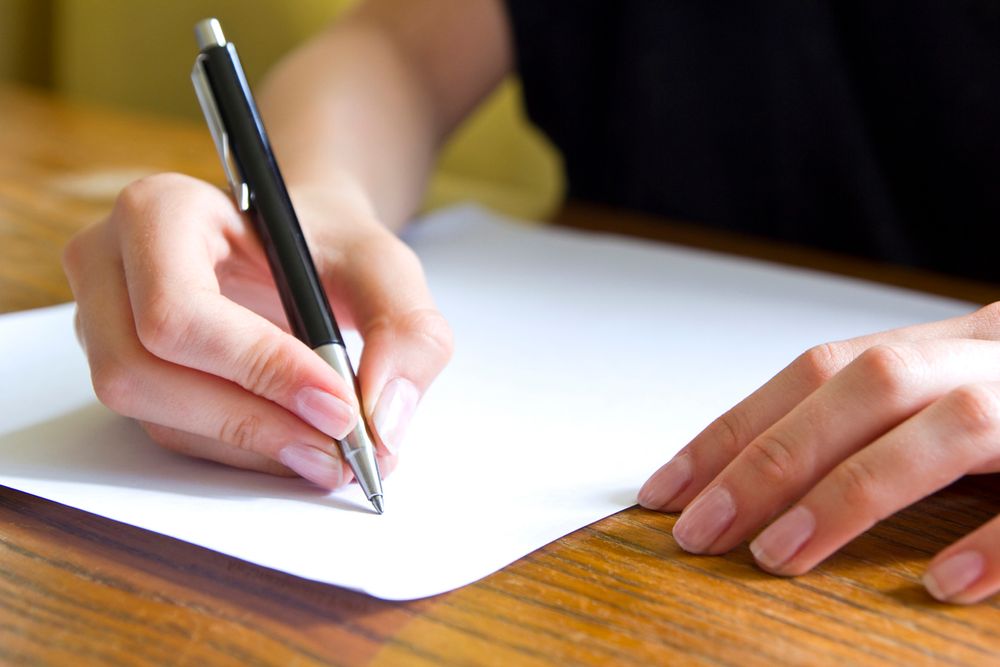
They’re usually strictly professional, but you may script a formal letter for serious personal correspondence.
Likewise, if you’re communicating with an authority figure (such as a superior, health professional, hiring manager, school faculty, etc.), you should almost always write a formal letter.
On the other hand, informal letter writing is the business casual of letters. Naturally, you want it to look good, but you also shouldn’t overthink it.
Informal letters are usually personal, but they may be sent under professional circumstances, such as between two co-workers.
By definition, informal letters shouldn’t be used as official documents. They also don’t follow any set formality. However, you should format and edit your letter to be coherent and easy to read.
As you can see, both forms are very distinct. You won’t be penalized for experimenting with style or format, but you might have issues if you pick the wrong form for your letter.
To ensure that never happens, we’ll show you how to write a letter in both formats.
How To Write a Formal Letter in 5 Steps
They say the pen is mightier than the sword. When it comes to formal letter writing, this phrase is spot on.
As one of the most versatile writing skills, a formal letter can express your ideas or work ethic better than any email or text might. A formal letter may also be the perfect first impression, perhaps even the key to your success.
View in gallery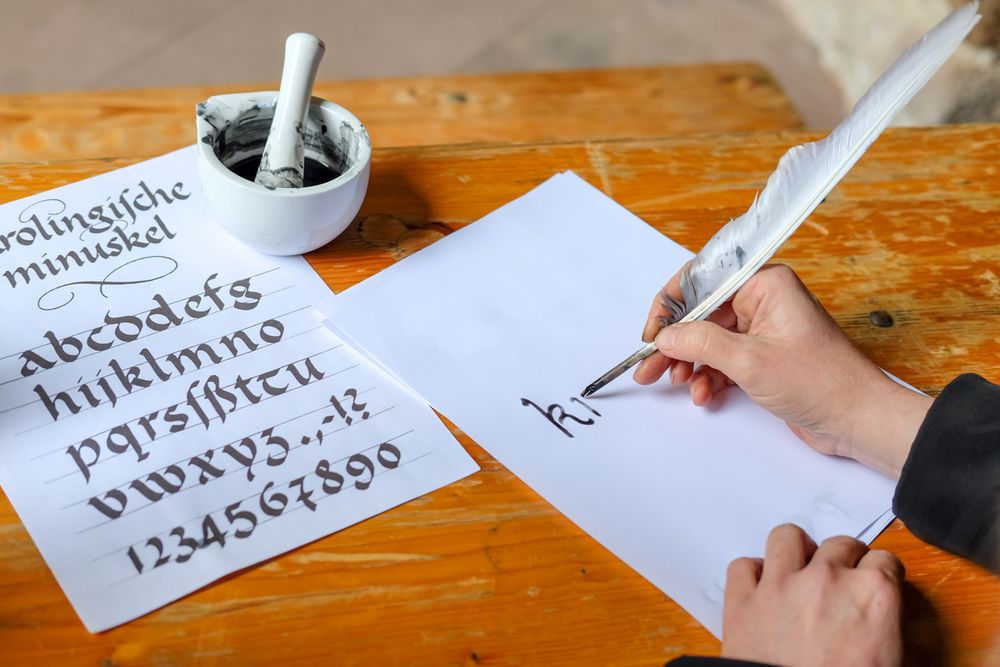
Whatever your end goal is, if you want to learn how to write a letter, you should start with formal letters. Let’s begin:
Step 1: Choose Between Block Form or Indented Form
Formal letters are usually written in block form or indented form (also known as the semi-block format.)
With block form, your letter is aligned fully to the left margin of the page (also called left-justified). There is no indentation in block form, as you can see below:

Meanwhile, the indented format adds a little more structure.
The first line of every paragraph is indented by one inch. Your address and dateline (the first section of your letter) are aligned to the center or indented by about five spaces.
Here’s an example of the indented form:
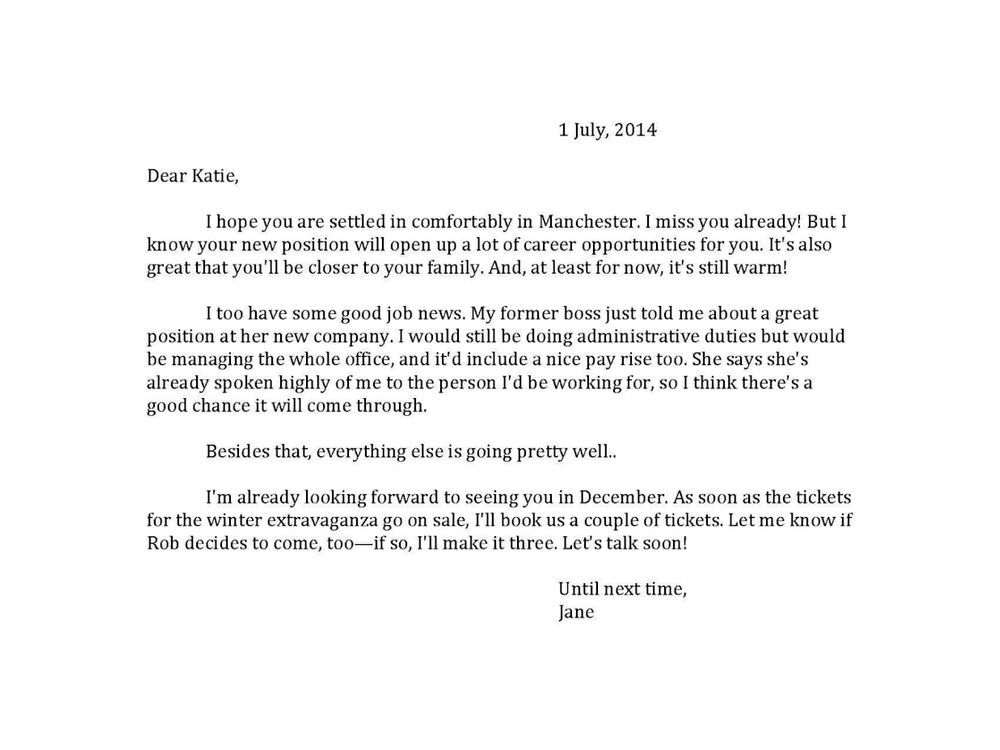
Block form is the most popular format for formal letters, whereas indented is slightly more rustic and visually varied. Both are acceptable, so pick whichever you prefer.
Step 2: Write the Date and Mailing Address
Once you’ve selected a letter format, start writing your letter. Add your name, full address, and date on individual lines.
- Block: This information should be written at the top, the text aligned to the left.
- Indented: This information should be aligned center or indented by five spaces.
After which, include the recipient’s contact information. Use their full name and job title if they have one (e.g. “Professor John Smith), followed by the recipient’s address on separate lines.
If the letter is addressed to the recipient’s place of work, their name goes first, followed by the company name and full address.
- Block: Keep the text left-aligned.
- Indented: Do not place the recipient’s information in the center. Instead, place it at the left margin without indentations.
Step 3: Write the Salutation
The next line will be your salutation, also known as the greeting.
A formal salutation can be as simple as “Dear Mr./Mrs./Dr. Last Name,” but you may just use their first name if you’re friendly with the recipient. If not, stick with their full name or job title and last name.
(Incorrectly spelling their name will come off as very unprofessional, so be sure to get it right!)
If you’re unsure who the recipient is, you may instead input “To Whom It May Concern.”
End the salutation with a comma (e.g., “Dear Sir,”) before skipping to the next line.
View in gallery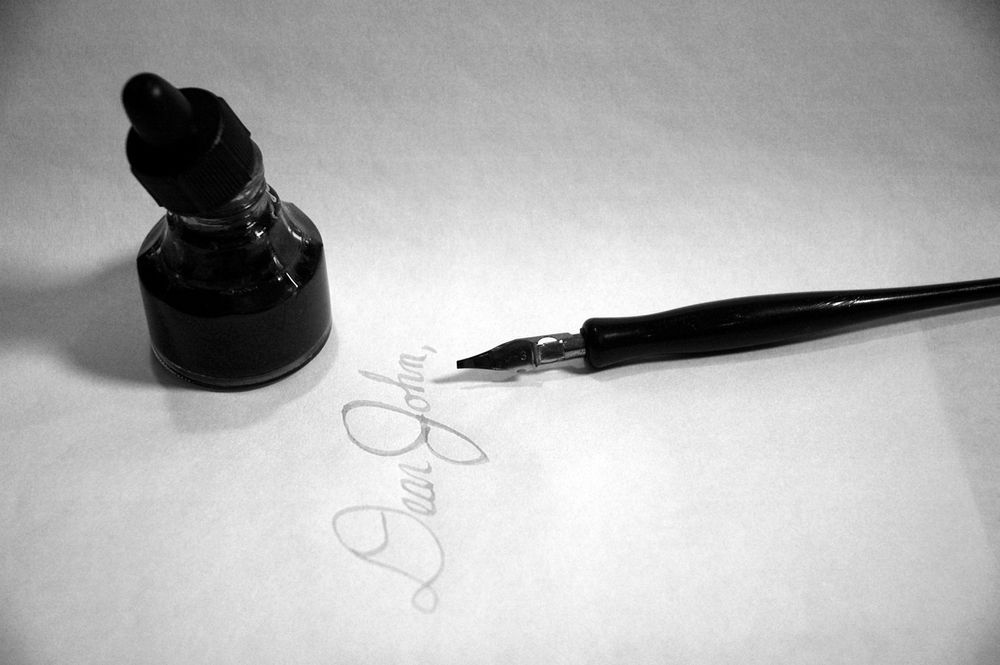
Step 4: Write the Body
The body will cover everything you’d like to share in your letter.
Both block and indent forms follow different formats for the text body:
- Block: All paragraphs should be single-spaced, left-justified, and separated by a single blank line.
- Indented: All paragraphs should be single-spaced with the first line indented by one inch. Separate each paragraph with a single blank line.
As for the content of the formal letter, keep these notes in mind:
- Formal letters in both forms follow the same grammar and spelling conventions.
- To craft an excellent formal letter, try and draft the body beforehand. This will help you narrow down your talking points and streamline writing.
- Write your letter as you would any formal document. Keep the text concise, authoritative, and straightforward.
- Avoid passive voice, casual phrasing, jokes, and inappropriate language.
Finally, the length of a formal letter is determined by its purpose. If needed, you may use the following pointers as a guideline:
- A formal letter, such as a cover letter, should be no more than one page long. However, there are always exceptions to this rule.
- If your formal letter is long (i.e., more than a page), you can include a closing paragraph summarizing the letter’s main points.
- As long as you stay on topic and avoid filler text, length is a nonissue.
Step 5: Close and Proofread Your Formal Letter
Following the body text, skip to the next line and type in your complimentary close (the valediction.) Again, remember to capitalize the first letter.
Hit enter again and write your name on the next line. Generally, you should write your name in full, but you may include abbreviations and your job title. After which, end your complimentary close with a comma.
Here are a couple of suggestions for closings:
- “Sincerely,”
- “With sincere gratitude,”
- “Sincerely yours,”
- “Kind regards,”
- “Best wishes,”
Please note that formatting conventions differ between block formats and indented formats.
- Block: Complimentary close is left aligned like the rest of the text.
- Indented: Complimentary close is aligned with your address and date. Position it to center justified or indent by five spaces.
You may indicate if you are sending additional items or documents alongside your letter by adding “Enclosures” or “Encl.” below your name.
If you’re sending multiple items, add, “Enclosures (# of items).” For example, this means if you’ve enclosed three additional documents, you should input “Enclosures (3)” or “Encl. (3).”
Remember to proof and edit your formal letter. Try to cut down on unnecessary details wherever possible and read your letter over at least twice before sending it.
How to Write an Informal Letter in 4 Steps
Unlike formal letter writing, there’s no correct format for informal correspondence.
This means many things can pass for an informal letter. Be it a message drafted on your pocket notebook, a handwritten letter written on expensive stationery, or a digital message you’ve printed out—as long as the correspondence is casual or personal, it’s an informal letter.
View in gallery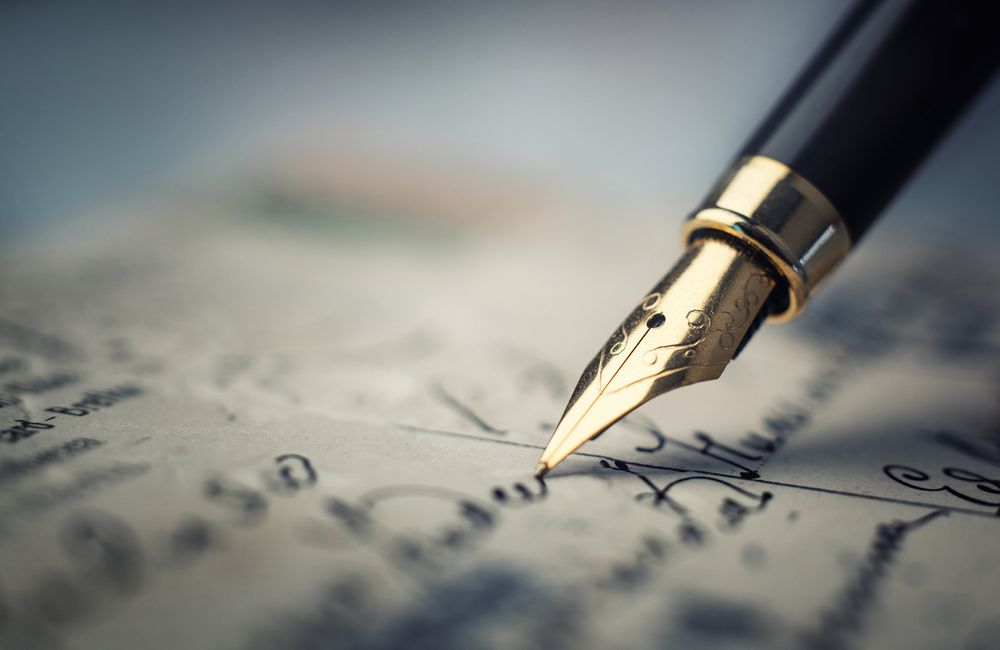
That being said, it doesn’t hurt to follow a tried-and-true letter format.
Here’s how to write a letter in an informal style:
Step 1: Write the Date and Salutations
Open your letter with a date and a greeting. The former isn’t necessary, but it can add a nice touch. You may place the dateline wherever you’d like, but writers usually place it in the top left corner.
Salutations, on the other hand, are customary. Most informal letters use them.
A typical example of an informal salutation is “Dear,” followed by the person’s first name. However, there’s plenty of room to experiment! You may use endearments, nicknames, or even their full name if you’d like,
As with formal letters, end the salutation with a comma, then skip to the next line. If you need inspiration for formatting, consider emulating the block form. Otherwise, check out the reference picture below:
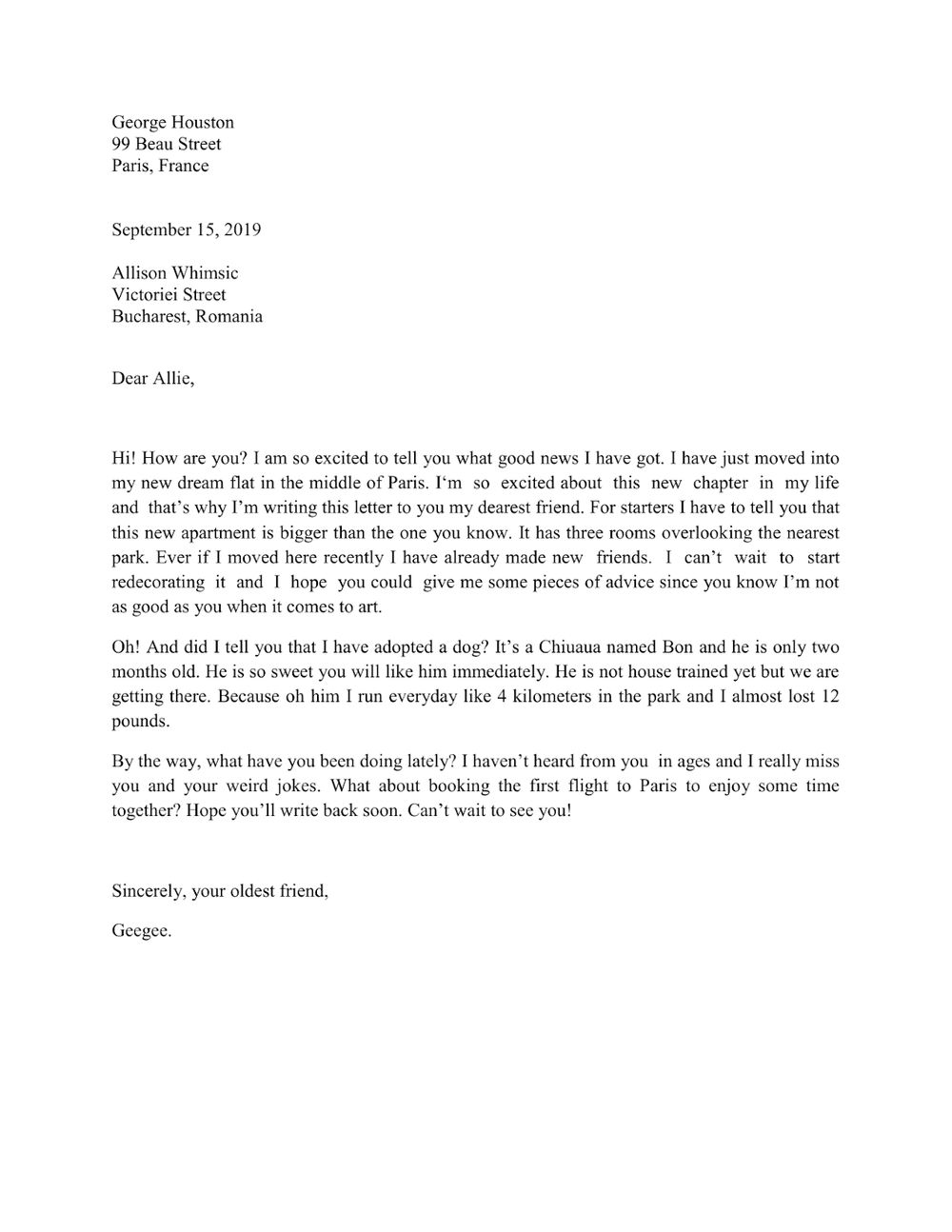
Step 2: Write the Body
Whereas formal letters are authoritative and impersonal, informal letters tend to use a conversational tone. This means you’re free to write the body any way you wish.
For example, if you’re writing an apology letter, you might use more casual phrases like “I’m sorry” or “Please forgive me” rather than “I apologize.”
On the other hand, if you’re writing a love letter, you might include love quotes for your girlfriend or similar sentiments.
Whatever you write, try to avoid going on tangents. Informal letters allow them, but going off-topic may make your letter difficult to read.
As long as you use appropriate paragraph breaks, the length shouldn’t be an issue. Try to be concise yet relaxed with your words.
Step 3: Close The Letter
After your closing paragraph, insert a complimentary close. Capitalize only the first letter and add a comma at the end.
Here are some examples:
- “Love,”
- “With love,”
- “Warm regards,”
- “See you soon,”
- “XOXO,”
- “Yours,”
After which, input your name. You may use your first name, a nickname, or even your personal signature.
If you forget any text in the body, you may include a final note after signing your name. This is called the postscript, which should be abbreviated as “P.S.”
The postscript is typically short, no more than a sentence or two, but this is up to you. If you want to add multiple postscripts, add another “P” for every section (e.g., “P.P.S.”)
Step 4: Edit and Proof
This step is optional, but it never hurts to double-check your work!
If you happen to be writing by hand, cross out mistakes in your draft. Underline areas you’d like to keep, then rewrite your letter onto a new, clean sheet of paper. If you’re writing in a word processor, edit your letter into a new document.
Finally, proofread your letter before mailing it.
Why You Should Write a Letter
If we were to ask our grandparents, there’s always a good reason to write a letter. While this may be true, a well-written letter benefits some situations better than others.
Here are a couple of examples:
View in gallery
You Need A Business Letter
Business letters are some of the most commonly written letters. They’re appropriate and expected in many situations.
For example, you may write a letter for a business proposal to a hiring manager or as part of standard communications.
Managers and business leaders often exchange vital information through business letters. They also expect their employees to be proficient in letter writing, making it a crucial skill.
You’re Looking For a Personal Touch
Whether it’s strictly business or a private message, a personal letter says more than any email, text, or voicemail ever can.
For one, letters hold physical value; the recipient can better feel the weight of your words when they have a paper to hold in their hands. Since it’s uncommon, writing letters is also a unique gesture. It leaves an impression, whereas a text or email is forgettable.
You might write a personal letter to thank a great boss, apologize to a friend, or show someone you care.
You Want to Make A Difference
Letters have changed the world—literally.
We post letters to lobby politicians and lawmakers. For example, concerned citizens write to businesses to protest against dangerous practices or environmental hazards. Others pen open letters to governments, communities, or organizations to promote change or some kind of action.
Whatever the cause, words are a powerful thing. Consider writing a letter if you need your voice to be heard.
5 Important Letter Writing Tips
Before we leave you to your letter writing, let’s quickly review some tips below:
View in gallery
- Plan out your letters: Some letters can get away without forethought, but like with any kind of serious writing, it’s better to plan than eyeball it. To do so, you may create an outline, rough draft, or list of topics.
- Use the right language: Match your letter’s tone to your relationship with the reader. For example, a formal letter to a close co-worker may be more casual than an informal letter to a distant aunt.
- Write to the reader: Even if the letter is highly formal, phrases like “we,” “our,” or “you” will build a stronger connection between you and the reader.
- Use pleasantries: Just as you might shake someone’s hand or send a birthday message, letters should include basic pleasantries. This is true even with letters addressed to strangers. A simple “Best wishes” can be a sign of respect.
- Cut down on jargon: Overly flowery or complex writing is distracting and challenging to read. You should use simple terminology whenever possible.
Conclusion: How To Write A Letter
Letter writing is one of the best writing skills you can pick up.
For private messages, a well-written personal letter can convey deep thoughts and striking emotions—two things a chat bubble doesn’t do quite as well.
Meanwhile, for business correspondences, one eloquent letter may change the course of your life. You might land a new position, snag a promotion, or make powerful connections by writing the perfect formal letter.
If it’s not already part of your wheelhouse, consider turning letter writing into a hobby. After all, practice makes perfect! You’ll master both formal and informal letters, as well as improve your writing skills.
Are you new to letter writing? Have any tips or suggestions? If so, feel free to share by dropping a comment below!




